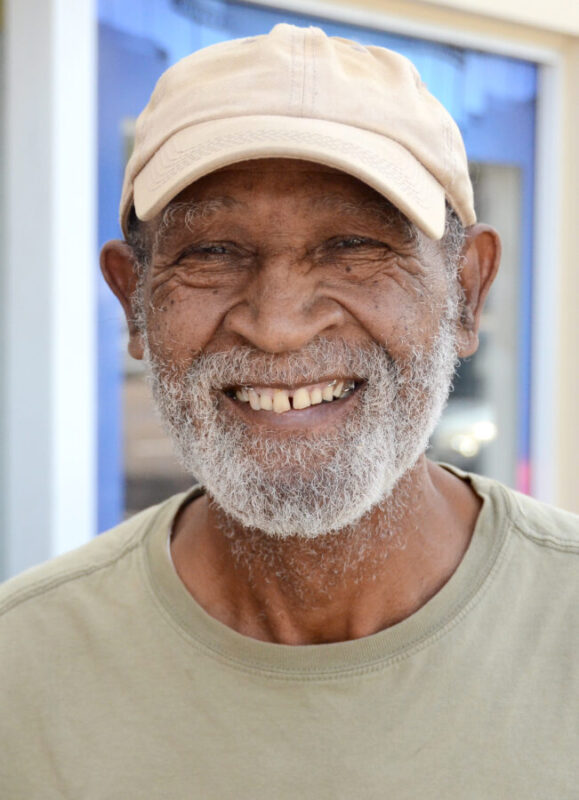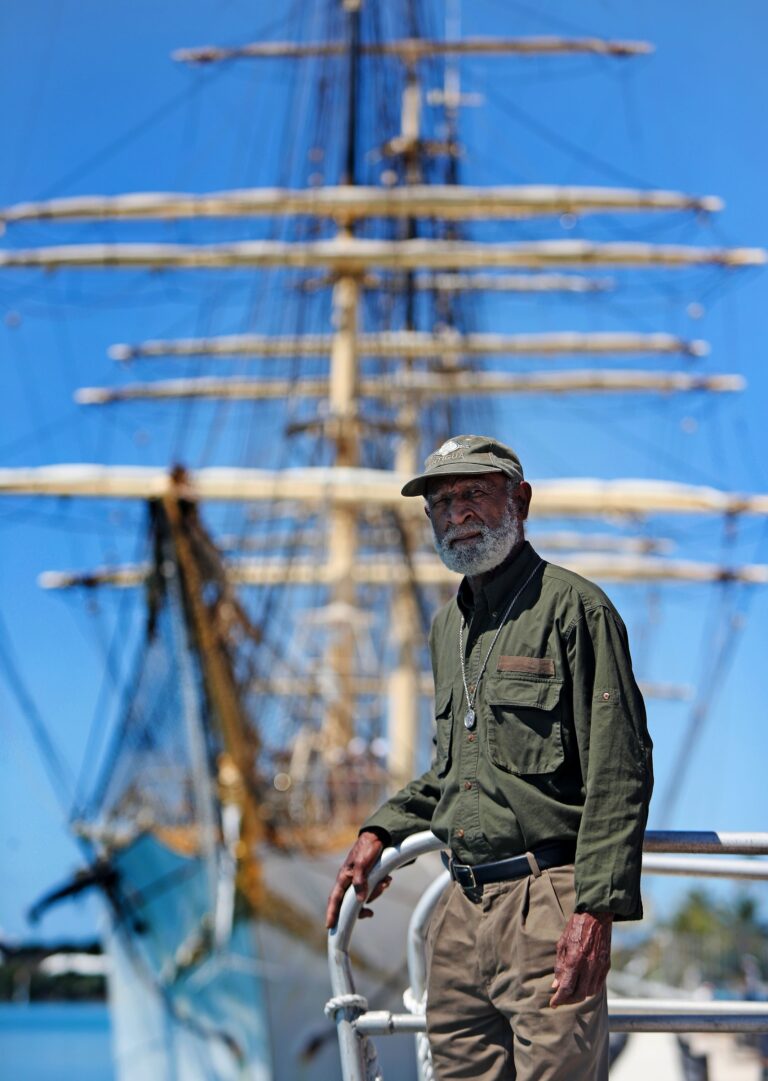By René Hill
Being a tradition bearer is as intrinsic to Milton Hill Sr as breathing.
Mr Hill spent his early years fishing off North Rock with his Uncle James (aka Jimmy Trott), before learning the art of shipwrighting from the likes of Rhodes Ratteray.
Today, he continues his craft, producing models of the Sea Venture, the Bermuda Gig, the Bermuda Sloop, and even a special art piece commemorating modes of transportation from the Darrell’s Island Airport to the Bermuda Sloop; which can be seen on display at the Bermuda International Airport. More than anything, he is most passionate about passing on the traditions of a bygone era.
The artist, who will be 80 in May, has witnessed the decline of many of Bermuda’s boats with the introduction of the automobile.
Until the early 90s, most of the boats he built were fishing boats – he always had a spare in his yard, and one in the water. Then he and his son, Wali Hill, began creating string art. Soon they would sell their first collection, called The Teaser, to Bluck’s on Front Street – which was followed by Smith’s, Trimingham’s, and A.S. Coopers.
Shows in Art Galleries would soon follow, as Mr Hill transferred his shipwrighting skills into miniature replica making.
 Over the years, Mr Hill has taught at almost every school, taking part in the Department of Community and Cultural Affairs’ Tradition Bearer’s programme – teaching promising art students like Ami Zanders and Tremaine Stovell, who would both become accomplished artists.
Over the years, Mr Hill has taught at almost every school, taking part in the Department of Community and Cultural Affairs’ Tradition Bearer’s programme – teaching promising art students like Ami Zanders and Tremaine Stovell, who would both become accomplished artists.
Other students included Luke Smith, Nicholas Lara, Sarah Lagan, and Esmeralda Zanders who, when apprenticing with him, created the HMS Resolution, marking the life of pilot Jamie Darrell – which is now on display at the National Museum of Bermuda.
Mr. Hill is currently teaching Whitney Institute Middle School students the art of shipwrighting.
“We are making a Bermuda Dinghy, which is about ten feet long,” he said. “It will be laminated with plywood over oak frames.”
The project, he disclosed, will even be seaworthy!
“The average Bermuda Dinghy is 12 to 18 feet long and – although shorter, at ten feet – it is a good project for kids to learn the old-fashioned way of doing things.”
Mr Hill is proud to be able to pass his skills on to Bermuda’s school students.
“I have been to all the elementary and high schools to share this knowledge,” explained Mr. Hill. “Each group does something different. I allow youngsters to use their imagination. It is a plus in this electronic world, as they need something else to do with their hands to stimulate them.”
The passing of this craft, and history, is very important.
“It is necessary because Bermuda itself is responsible for what you see out here with regards to sailing and yachting and not many youngsters know this,” explained Mr. Hill. “For instance, the Bermuda Rig was the forerunner of yachts today.
“The part Bermudians played in the development of the proper – or better yet – faster ways of sailing is nothing short of incredible.
“The Bermuda Rig has a triangle sail, and whether it is the America’s Cup or whoever, everyone uses the sail that was first designed in Bermuda.
“If we could get royalties for what our ancestors did it would be incredible!”
Mr Hill is passionate about passing on this vital tradition.
“The few shipwrights that were around are all gone now. The last one was Dockyard Apprentice Raymond DeShields, who built The Deliverance on Ordnance Island,” he concludes. “Others included Alfie Cann, Clifford Lee, the Soares brothers, Buddy DeSilva, the Baisdens, and so many St. David’s Islanders.”

